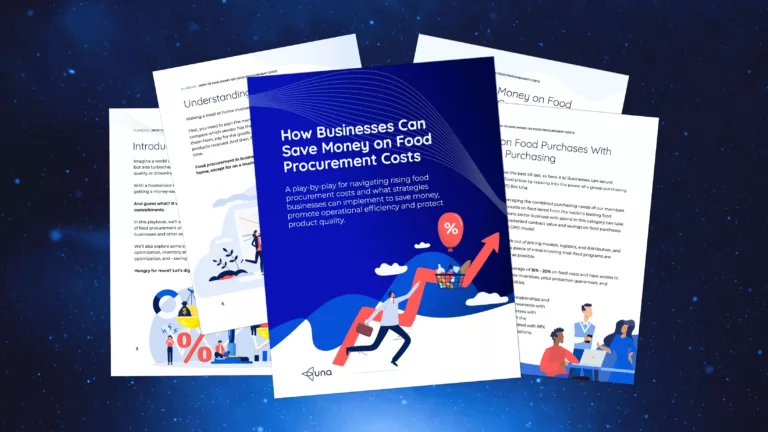
Mastering Change Management in Procurement
Change management in procurement is an integral part of any sourcing manager’s job. Here are three steps to overcome resistance to change.
By Kris Lance | February 2, 2023
It’s probably safe to say your organization is experiencing a lot of changes these days. Implementing and adapting to change can be challenging for everyone and you’ve most likely witnessed a major change fail to land within your organization, even under normal circumstances.
At the beginning, the process tends to start out well. A big announcement from the leadership team comes first, for example, followed by a cavalcade of communication and documentation explaining the new process or way of working. Then, due to any number of reasons (including resistance among the people impacted by the change), sometimes a change just doesn’t stick.
The person responsible for the change may keep trying to champion the cause for a few weeks, but eventually, they will give up. In the end, the change manager is summoned by the leadership team to explain why so much money was wasted with no result.
Change management in procurement
Change management is an integral part of any strategic procurement manager’s job. It ranges in scale from small changes (a change of supplier, for instance) to more significant changes like altering the way goods and services are purchased, to a major change like a software implementation or procurement transformation.
As such, the change manager’s skill set is (predictably) made up of soft skills including:
- Business acumen
- Analysis and planning
- Communication
- Leadership
However, seventy percent of change management efforts fail to achieve their goals. Common reasons include, for example, bad leadership, ineffective processes, poor timing, poor planning, under-communication, or change fatigue.
Change management is an integral part of any strategic procurement manager’s job. Without the right approach, however, up to 70% of change management efforts fail.
Three steps to overcoming resistance to change
Change management is an enormous challenge. For the purposes of this article, let’s focus on overcoming resistance to change.
Engagement
If you live in an apartment, a great way to stop your neighbors from complaining about the noise of a party is to invite them to the party. This concept applies to change management, as well.
One of the mistakes often made by organizations is to plan, develop, and launch a procurement change initiative entirely within the bubble of the procurement and leadership teams. When it’s finally announced, the change can take your stakeholders completely by surprise, which increases the likelihood of resistance.
Instead, make it a priority to engage with stakeholders who will be affected by the change at every level of the organization. If it’s a change in software, for instance, ask the end-users what their pain points are, what they’d like to see improved, what training they require, and so on. Let them know their input is important to you, and if you’re not going to make use of their suggestions, explain why.
Then, stress the importance of communication. Keep stakeholders updated during the planning process so that by the time it comes to launch, nobody is surprised. After launch, create a feedback loop to find out what’s working, what isn’t working, and where resistance to change exists.
Manage resistance
Resistance to change is human nature, and it would be very unusual to encounter zero resistance when you launch a procurement change initiative. If you’ve done your homework, you should be able to anticipate where (and why) objections will occur.
Perhaps people are comfortable using legacy software, or they are familiar with using an incumbent supplier, or don’t want to have to take the time to adapt to a new way of doing things. Anticipate resistance first and develop a plan for it to show them the value.
Most importantly, be realistic. You can’t expect to convert your biggest critics into advocates, but you may be able to convince them not to actively campaign against the change initiative.
Don't neglect training
Be firm about defending the training budget for your change management initiative. Without effective training, the chances of failure will increase and end-users will have a lot more difficulty adjusting.
As a result, resistance to the change will rise. Let users know where they can get support or answers to their questions, be patient with slower learners, and make time to help those that are finding the change a challenge.
Training will require more than a single information session when the change initiative is launched. Ensure there is a budget for ongoing training, incorporation into onboarding, and different formats such as self-service e-learning portals and face-to-face coaching.
Change management in procurement requires empathy
In conclusion, if you asked me to summarize why change initiatives fail, I would say it’s because the people driving that change lack empathy. It’s easy to get excited about something and convince yourself of all the reasons it will work, for instance, but if you don’t take the time to consider how a change will impact others, it is doomed to fail.
It’s important to be especially mindful in times of uncertainty when we’re all having to adapt to one change or another on what seems like a regular basis. Taking extra time to be considerate towards others and nurturing the resistance to change will help set yourself and your organization up for success.
Need to further discuss the benefits of changing your procurement strategy? Contact us to learn more and take advantage of the power of group purchasing.





